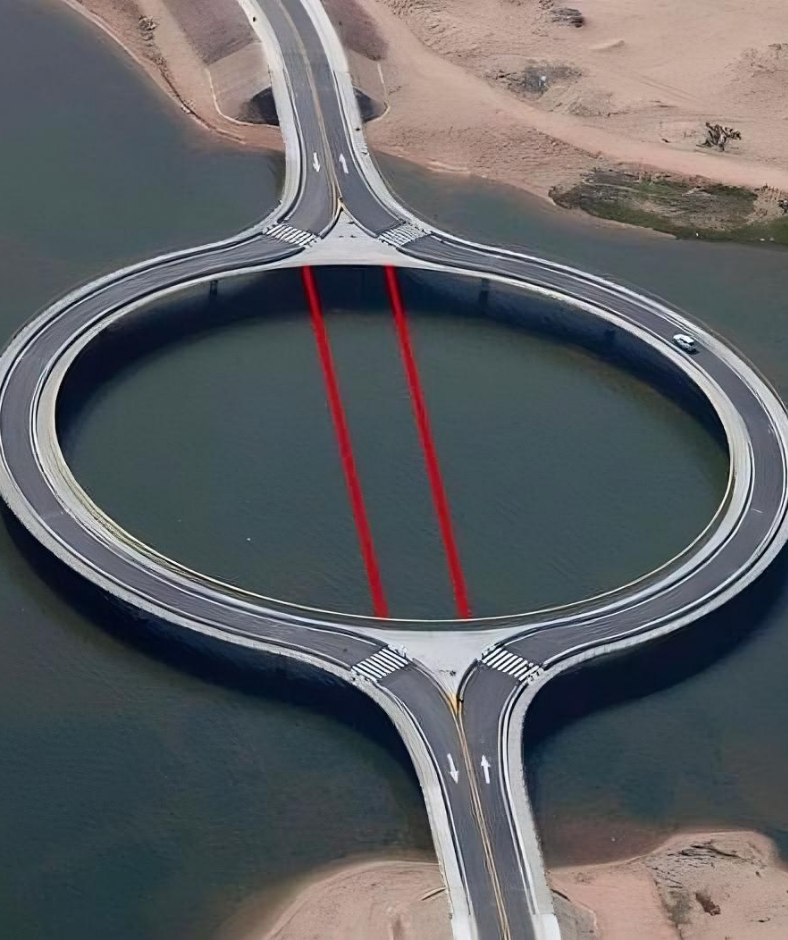When most people think of bridges, they picture straightforward, functional structures that connect one side of a river or body of water to another in the most efficient way possible. But in Uruguay, a visionary architect decided to break from tradition and reimagine what a bridge could be—not just as a means of transportation, but as a destination in itself.

The result is the stunning Laguna Garzon Bridge, a circular engineering marvel that spans the calm waters of Laguna Garzon and has become both a local treasure and an international point of interest. Unlike the typical straight-line design, this bridge is built as a perfect circle, a choice that’s not just for show. The design intentionally forces drivers to slow down as they make the loop across, encouraging them to take in the breathtaking natural landscape that surrounds them.
Completed in 2016 at a cost of $11 million, the bridge was years in the making, with extensive government discussion and planning before construction finally began. Architect Rafael Viñoly, the creative mind behind the project, explained that his goal was to transform the crossing experience into something more meaningful. Instead of merely driving from point A to point B, he wanted people to engage with their surroundings, slow their pace, and appreciate the beauty of the Uruguayan coast. Before the bridge was constructed, getting across Laguna Garzon was a cumbersome ordeal that required loading cars onto small rafts to be ferried from one side to the other. The circular bridge replaced that outdated method with a modern and more efficient roadway that now sees about 1,000 vehicles pass over it daily.
But beyond convenience, the bridge has also opened the door to significant development in the region. It links the counties of Rocha and Maldonado and provides access to the previously isolated Rocha coastline, unlocking its potential for tourism and economic growth. In 2015 alone, Uruguay welcomed 2.9 million visitors, and officials are optimistic that unique attractions like the Laguna Garzon Bridge will continue to draw travelers from around the globe. From an architectural perspective, circular bridges are rare—especially ones designed for high-volume traffic like this. Most circular bridges are pedestrian walkways or decorative features in parks and city centers. Viñoly and his team embraced the challenge, designing a structure with a 51.5-meter radius that accommodates two lanes of car traffic. The bridge’s design manages to combine artistic elegance with practical utility in a way that few infrastructure projects do.
Its graceful curve is more than just visually striking; it creates a safe, deliberate driving experience while forming a central lagoon space that adds yet another layer of functionality. This inner space has even become a spot for local activities like fishing and small-scale boating, transforming what could have been wasted space into a lively community area. The Laguna Garzon Bridge isn’t just about slowing down traffic—it’s about rethinking how we interact with the roads we travel. In a world where infrastructure is often designed with little regard for aesthetic or environmental considerations, this circular bridge is a refreshing example of what can happen when creativity is allowed to take the lead. It brings together community needs, traffic safety, scenic value, and environmental mindfulness in one cohesive project. As Uruguay positions itself as a leader in sustainable development and eco-conscious tourism, the Laguna Garzon Bridge serves as a bold statement about the country’s commitment to doing things differently. This isn’t just a bridge—it’s a symbol of vision, innovation, and a belief that infrastructure can be both useful and beautiful. It stands as a reminder that when we slow down and look around, even something as ordinary as crossing a bridge can become a memorable part of the journey.





